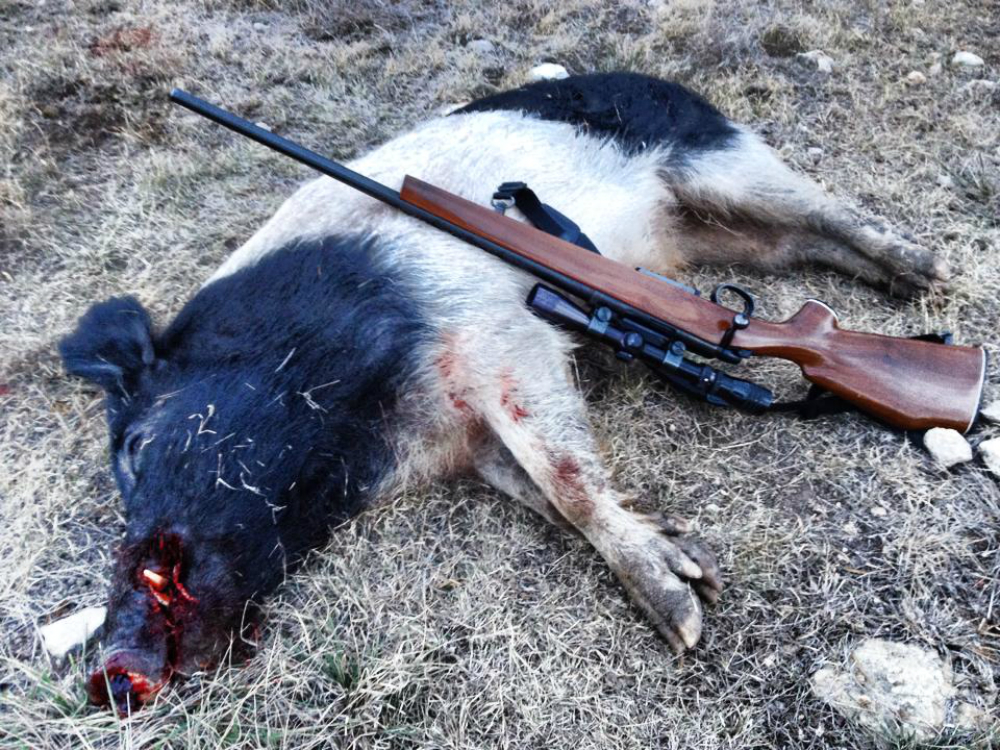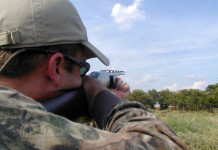Texas is unrivaled in lands and waterways filled with game birds and game animals, offering a wealth of outdoors opportunities.
However, with the good also comes the bad – and even the ugly.
We’re infested with invasives of all shapes, sizes, demeanors and hues, some of them much closer than you may realize – possibly even on your property right now.
Here’s a glimpse at five invasives, including an animal, mollusk, fish, tree and fungus that have the potential to produce negative long-term impacts in different regions of the state.
Feral hog: This is the face of the invasive issue in Texas, and for good reason: a Texas A&M University shed light on just how prolific these omnivores have become. If left unchecked, the state’s feral hog tally — which was averaged at roughly 2.6 million animals but is probably much higher — will more than triple in five years. The report found that the estimated reduction on feral hogs statewide from trapping, hunting and other methods in one year was 753,646, or 29 percent of the population. Even at that same harvest rate, the report states that the population would double in five years.
The most glaring figure from the report is the reduction rate necessary to keep the population in check. Roughly 66 percent of the animals must be taken off the range annually to keep their ranks from growing — something that’s never going to happen by any means or methods. The analysis also showed that nearly 80 percent of Texas — approximately 134 million acres — is suitable feral hog habitat.
Early Spanish explorers probably were the first to introduce the feral pig to Texas, hoping for a regular source of cured meat and lard for settlers. Russian boars were later introduced in the 1930s for sport hunting, paving the path for destruction when they escaped and bred with feral pigs. The rest, as they say, is history.
Zebra mussel: This nasty critter has wreaked havoc across the Great Lakes, and millions of dollars are spent each year controlling, cleaning and monitoring zebra mussels in other states. Texas has become a new breeding ground for the mussel, so much so that a new law went into effect July 1, requiring that all freshwater boaters drain all water from their crafts and onboard receptacles before leaving or approaching a lake. It applies to all types and sizes of boats whether powered or not.
Zebra mussels became established in Lake Texoma in 2009. In 2012 they were found in Lake Ray Roberts and the Elm Fork of the Trinity River. Last year zebra mussels spread to lakes Bridgeport, Lavon, Lewisville and Belton. They can expand their range by hitching a ride on trailered boats that have been immersed or moored in waters where they have established populations.
The rapidly reproducing mussels, originally from Eurasia, can have serious economic and recreational impact to reservoirs. They can clog public-water intake pipes, harm boats and motors left in infested waters by covering boat hulls, clog water-cooling systems, annoy boat-dock owners by covering anything left underwater and make water recreation hazardous because of their sharp edges.
Indigenous to lakes, the mussels prefer slow-moving water. They are found in rivers and streams, but their populations are high in lakes.
Lionfish: This is the most dangerous creature lurking off the Texas, but it already has encroached on some well-known fishing and diving hot spots. Much like pythons in the Florida Everglades, these alien invaders have no natural predators in their new environments – except for man – and can’t be held in check by any other means than being captured and killed.
The lionfish’s continued expansion includes the Gulf of Mexico. A specimen was even caught at the Packery Channel jetties in Corpus Christi. The fish also has been found at the Flower Garden Banks National Marine Sanctuary, the northernmost coral reef bank in North America, about 100 miles south of Galveston. Lionfish have been found to have eaten almost any other marine life they can snag. Those other critters include shrimp, crabs and more than 100 other species. They’ve even been found to eat other lionfish and have been detrimental to a number of prized game fish including snapper, choking out food sources for other species as well.
While lionfish have been linked to warm habitats, they have shown that they can survive in a range of conditions and depths – even freshwater – and can reproduce quickly, able to breed roughly a year after being born. Predators in their native habitats in the western Pacific Ocean feed on their eggs and parasites there also help control those populations, but in new areas without these control factors, the lionfish has thrived.
It is speculated that the lionfish was introduced to U.S. waters in the late 1980s or early 1990s. The most probable method of introduction is via the aquarium trade as owners often dump unwanted pets when they become too large or expensive to keep any longer.
Salt cedar: This invader has taken over a number of areas, including in the Rolling Plains and Panhandle, choking out native vegetation that can’t compete for water. This is a fire-adapted species that has long tap roots that allows it to lurk deep into the water table and interfere with natural aquatic systems. Salt cedar disrupts the structure and stability of native plants and degrades wildlife habitat by outcompeting and replacing native plant species, monopolizing limited sources of moisture, and increasing the frequency, intensity and effect of fires and floods. Although it provides some shelter, the foliage and flowers provide no food value for native wildlife.
It is hypothesized that East Coast nurserymen made the first introduction of salt cedar to North America in 1823. Salt cedar appeared on the West Coast, where it was apparently brought in from eastern nurseries. It was planted as an ornamental in the western United States, but by the 1870s it was reported to have escaped cultivation. By the 1920s salt cedar already had become a serious problem, spreading rapidly through the watersheds of the southwest.
The salt cedar grows best in saline soils but is adaptable and tolerant of a variety of environmental conditions, making it a dangerous invasive requiring extensive and costly control measures.
Oak wilt: This fungus was discovered in Dallas in the 1960s and has spread to a number of areas, including Lubbock, Hale, Hockley and Terry counties and numerous counties in Central Texas, according to the Texas A&M Forest Service. Live oaks and red oaks are most severely affected by the fungus, and red oaks appear to play a key role in the establishment of new infection centers.
The Texas live oak, which is responsible for producing some of the oldest trees in the state, is susceptible to the disease, but because of its tendency to form large root connections through which the disease can spread, it is considered to be an important host.
The fungus also may be spread by insects and through movement of wood from infected oaks to other locations. Reports of widespread tree deaths that resemble oak wilt date to the 1930s.
Click here for more information on Texas invasives.





















Very good report. We have our invasives up here also of which one is the Zebra Mussle. That salt Cedar is really most likely part of the Cypress family. There are very few real cedars in the US. Almost all are relatives of the Cypress. There are two or three real cedars from Africa and Asia that grow in peoples yards but that’s it.